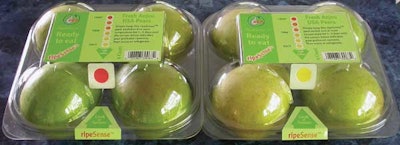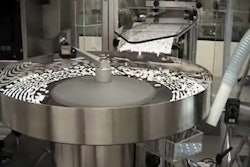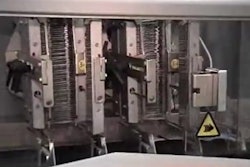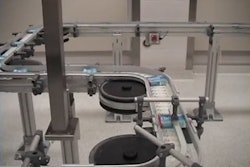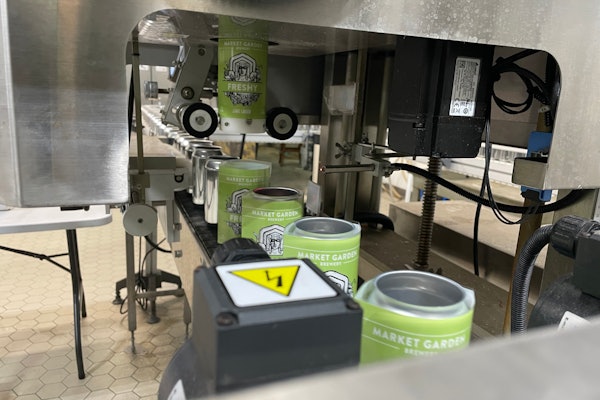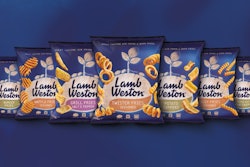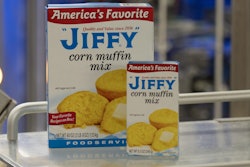The Pear Bureau Northwest, Milwaukee, OR, helped coordinate a market test of the technology from October 2003 through the year’s end at six Zupan’s supermarkets in the Portland, OR, area. Tested were polyester clamshell four-packs of green Anjou pears, which do not change color as they ripen.
The ripeSense™ sensor from the Jenkins Group is affixed inside the front lid of the clear polyester clamshell. The sensor label’s color changing chemistry responds to the ripening aromas of the fruit. Before packing by Stadelman’s of Hood River, OR, the fruit is ethylene conditioned to hasten and equalize the pears’ ripening. The indicator color visually indicates the pears’ ripeness on an accompanying pressure-sensitive label printed with the scale from crisp (orange) to juicy (yellow).
“We’ve discussed for years ‘wouldn’t it be great if there was some sort of label to tell consumers when the fruit was ripe?’,” says Kevin Moffatt, president and CEO of PBN, whose members grow 84% of the pears in the United States.
Moffatt says the test confirmed the labels’ color-changing accuracy. The packs carry no use-by or fresh-by date. The pears’ typical shelf life is three to five days, though Moffatt points out that refrigeration slows ripening.
The clamshells are thermoformed in New Zealand. A 1?4’’-dia hole in the bottom of each of the pack’s four compartments provides air flow. The clamshells’ feet permit stacking. The lid friction-fits into the base and is secured with a p-s label that provides tamper-evidence.
Zupan’s liked the packs’ attractiveness, as well as the reduced in-store labor costs and the reduced handling of fruit by consumers, “especially as the pears ripen, when they become softer and easier to damage. This should reduce shrink (product loss),” Moffatt says. The four-packs sold for $2.99, $1.99 on special, according to Moffatt. Moffatt expects commercialization of millions of the sensor-containing packs in late ’04 during the next packing season. —RL
